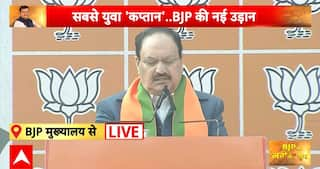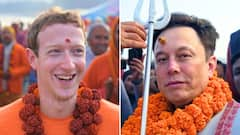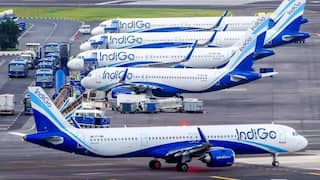As India Prepares For ‘6G By 2030’, Here’s What The Next-Gen Network Will Bring To The Table
6G promises to be up to 100 times faster than 5G in terms of Internet speeds.

Prime Minister Narendra Modi on Wednesday unveiled the Bharat 6G Vision Document which lays out a roadmap for how India plans to roll out 6G services across the country by 2030. PM Modi in October officially launched 5G services in the country. Following this, telcos such as Bharti Airtel and Reliance Jio have rolled out 5G services in over 400 cities. Now, within a matter of six months, India is now planning to launch 6G for its citizens. What will it bring to the table? Let’s find out.
6G: How Much Faster Is It Than 5G?
6G, or the sixth-generation mobile network system, is currently under development.
5G speeds in India are capable to go up to 1Gbps. If you’re an Airtel or a Jio user, and if you are living in a 5G-enabled city with a 5G-enabled handset, you can easily get download speeds of up to 700-900 Mbps.
Now, 6G is expected to offer Internet speeds up to 100 times faster than 5G.
ALSO READ: 6G By 2030: PM Modi Unveils Next-Gen Network Roadmap
Benefits Of 6G
As mentioned earlier, 6G is still under development so it’s still early to predict the exact use cases of the next-gen network.
However, as per Ericsson, 6G is designed to create a world where digital and physical elements will merge like never before. “This merged reality of the future will provide new ways of meeting and interacting with other people, new possibilities to work from anywhere and new ways to experience faraway places and cultures,” the Swedish telecom company said.
6G is expected to play a massive role in the metaverse, which is largely being touted as the future of social media — and the Internet — as we know it. The immensely faster network will enable users to seamlessly switch from the physical world to a digital one.
“The cyber-physical continuum of 6G includes the metaverse as it is typically understood – a digital environment where avatars interact in a VR/AR world – and goes further, providing a much closer link to reality,” Ericsson explained. “In the cyber-physical continuum, it will be possible to project digital objects onto physical objects that are represented digitally, allowing them to seamlessly coexist as merged reality and thereby enhance the real world.”
6G can also be leveraged by sensors to send data from the physical world to the digital, which is expected to be mostly seen in wearables, where your health biometrics can get seamlessly uploaded to digital for e-health needs.
Apart from precision health care, 6G can also help sectors such as smart agriculture, global monitoring, robot navigation, and more.
As per Ericsson, the effects of 6G will largely be seen in three areas: connected intelligent machines, Internet of senses, and connected sustainable world.
6G will support never-before-seen smart entities such as AI-powered intelligent machines that can communicate with each other and solve problems without the need for human intervention. Coming to the Internet of senses, 6G will help devices, sensors, actuators, and context-aware apps to make users’ digital experiences better. Lastly, as governments are working towards reducing global carbon emissions by 2030, both 5G and 6G will become incredibly handy for a better, sustainable future.
India’s 6G Roadmap
The Modi government has announced plans to set up the Bharat 6G project, which will be responsible for identifying and funding research and development to enable 6G rollout in the country.
The Centre will also set up an apex council that will oversee the project. It will deal with issues such as the identification of 6G spectrum, standardisation, creation of device ecosystem, and of course, managing R&D finances.
ALSO READ: As India Embarks On 6G Journey, Ashwini Vaishnaw Says Country Already Has Over 120 Patents
Bharat 6G project will be implemented in two phases. The first one, from 2023 to 2025, will see exploration of ideas and proof-of-concept testing. In the second phase, from 2025 to 2030, the government will try to commercialise peer-reviewed ideas and concepts.
The Centre will also need to explore shared use of spectrum to support the higher-frequency 6G network, as outlined in the Bharat 6G Vision document unveiled by PM Modi.
Lastly, the document has proposed the creation of a corpus of Rs 10,000 crore to fund research and innovation.
Related Video
Apple creates a new record in iPhone sales after launch of iPhone 16 | ABP Paisa Live








































